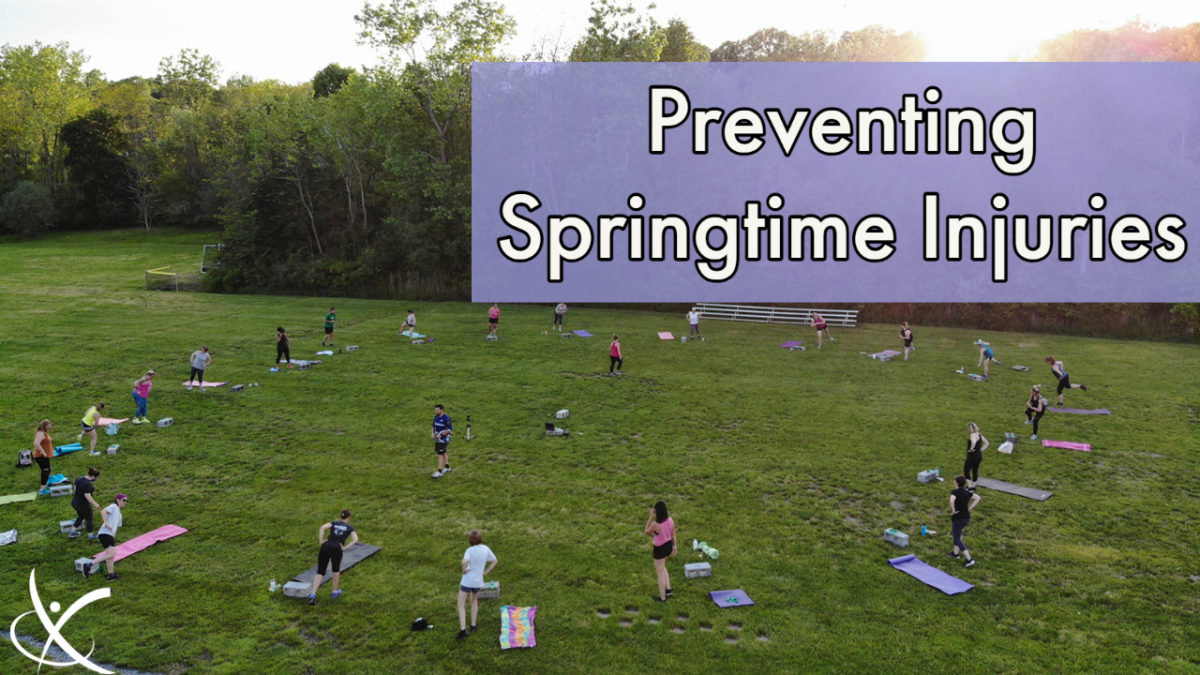
Recommendations for Staying Strong as You Age
May 8, 2022
Who is Your Adductor and What Does He Do?
May 21, 2022Tips for preventing springtime injuries
We may be physical therapists and beating a dead horse here, but if you want to remain injury-free and active throughout your lifespan, improving your body’s physical capacity is imperative.
Spring into summer is when we see many injuries occur. People start doing things that they have not prepared their bodies for, and voila, a nagging pain pops up. So, how can you set yourself up for positive change and fewer “seasonal” injuries?
There are a few variables we often discuss. The first is increasing your body’s ability to do what you’re asking it to. This means systematically adding extra activity into your daily routine to help yourself improve your body’s tolerance to tasks.
Now, there are many scientific ways to track your activity levels; however, we won’t dive into those here. What we want to do is provide several recommendations on how to build up your body’s capacity and decrease your risk for injury.
Of course, we’re going to throw in resistance training. Otherwise known as strength training, resistance training allows our bodies’ to improve musculoskeletal and cardiovascular capacity. As much as it helps our muscles and bones, it also positively affects our heart, lungs, metabolic processes, and neuromuscular system.
It is an often overlooked and forgotten aspect for some as people often focus on walking, running, and cardiovascular exercise. Research says people stray away from strength training due to an unfamiliarity with the environment and fear of judgment. Some are afraid of gaining too much muscle or weight. Others just simply don’t understand the importance of protecting our bodies over time.
So, how can you possibly get over the hurdle of fear when implementing a strength routine? Well, we recommend a few things.
- Find someone to help. (Like your friendly, local physical therapist!)
- Reach out to your friends. (We’re those too.)
- Join a workout group (Like our B3 Strength Training Group!)
- Remember that everyone looks a little silly from time to time. (We have video proof, somewhere).
Oh, and just a side note- it’s never too late to start!
When combating seasonal injuries, we also talk about three variables relating to resistance training, yard work, running, sports, etc. They are:
- Frequency: How often you do a task.
- Duration: How long you do a task.
- Intensity: How hard you do a task.
Activity parameters should be increased in this order to help our bodies acclimate to activity.
Have you ever performed a task for hours at a time and woke up in pain the next day? In this scenario, you need to ask yourself several questions:
- Did you train to be able to do the task at hand?
- Did you perform the task for small amounts at a time, multiple days per week or did you jump into performing hours at a time?
- Did you slowly increase the amount of time you spent performing the task at hand?
- How difficult was the work or task? Did you have to move faster than you’re used to or lift heavier things than you’re accustomed to? Did you train to do so?
Well, I think if you explore the answers to these questions, there would be no question as to why your knee or back hurts the next day. As humans, our bodies need to be conditioned to tasks we’re asking them to do. Can an astronaut step into a spaceship without prior training or an individual climb Mount Everest without acclimation? I don’t think so.
Resistance training and attention to capacity are key when performing activity. We cannot simply jump into performing strenuous tasks without training properly or else injuries happen. So, if you don’t know where to start or have any questions regarding the information in this post, please don’t hesitate to reach out!
Oh and for our shameless plug: Let us help you learn how to resistance train and improve your capacity by joining us for B3 Strength Training.
We’re always here to help, especially when it comes to helping you perform to the best of your abilities……
Happy Spring, folks!





